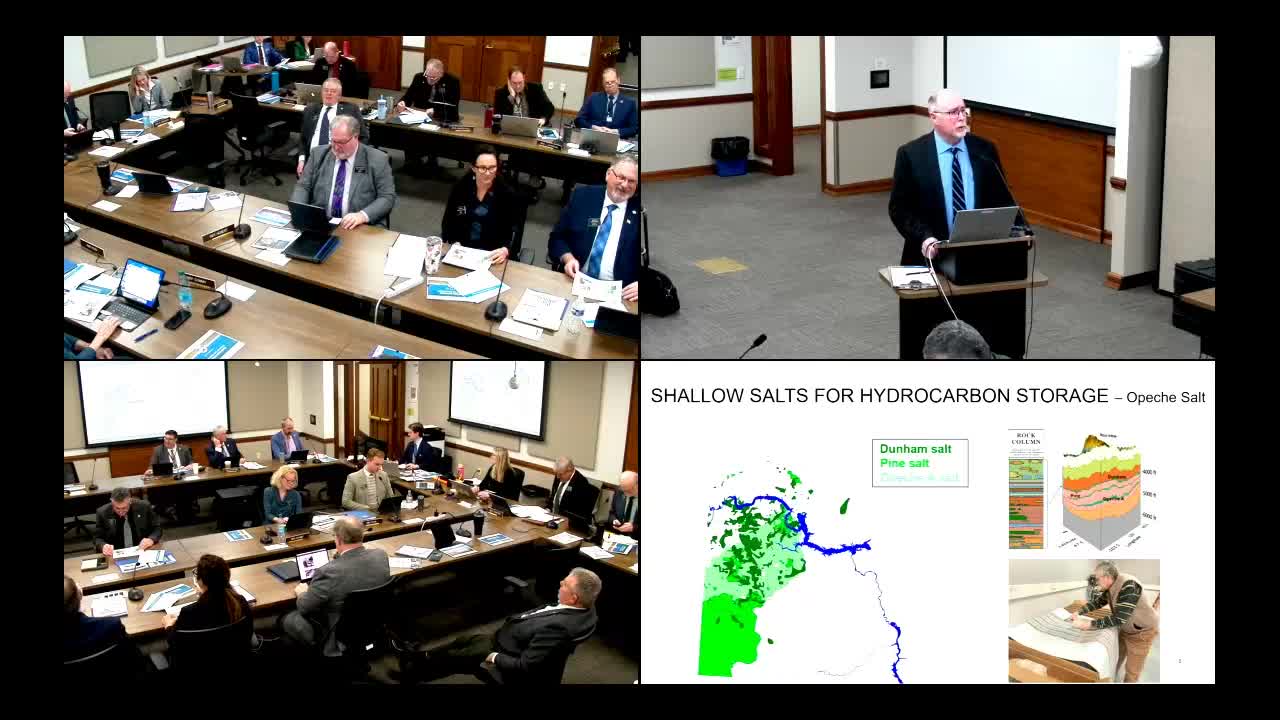North Dakota Geological Survey reveals potential for 400 million barrels of recoverable oil
January 09, 2025 | Energy and Natural Resources, House of Representatives, Legislative, North Dakota
This article was created by AI summarizing key points discussed. AI makes mistakes, so for full details and context, please refer to the video of the full meeting. Please report any errors so we can fix them. Report an error »

In a pivotal government meeting on January 9, 2025, the North Dakota House Energy and Natural Resources Committee spotlighted significant advancements in hydrocarbon storage and critical minerals exploration, underscoring the state's growing role in energy production and mineral resource management.
The meeting revealed promising findings from a recent study on the Bakken Petroleum System, which analyzed 593 wells in Northeastern McKenzie County. The research indicated that the majority of middle 3 Forks wells demonstrated increased oil production, suggesting the potential for an additional 400 million barrels of recoverable oil. This could lead to the establishment of 600 new Bakken wells in the area, significantly boosting local energy output.
Additionally, the committee discussed the ongoing mapping of landslides across North Dakota, which has identified 65,000 landslides statewide. This extensive mapping effort, now in its third phase, utilizes advanced LiDAR technology to monitor active landslides, enhancing safety and environmental management in the region.
A key highlight of the meeting was the exploration of critical minerals, particularly rare earth elements, which are essential for various technologies and national security. The state has collected over 22,100 rock samples, revealing concentrations of rare earths that exceed previous findings. The committee emphasized the importance of developing local resources to reduce reliance on foreign supplies, particularly from China, which currently dominates the rare earth market.
The discussions also touched on the economic viability of mining these minerals, with potential methods including surface mining and in situ techniques. The committee is seeking additional funding to continue drilling and analysis, aiming to position North Dakota as a leader in the critical minerals sector.
As the meeting concluded, the committee members recognized the strategic importance of these developments, not only for North Dakota's economy but also for national energy independence and security. The anticipated outcomes from these initiatives could reshape the state's energy landscape and enhance its role in the broader context of U.S. mineral resource management.
The meeting revealed promising findings from a recent study on the Bakken Petroleum System, which analyzed 593 wells in Northeastern McKenzie County. The research indicated that the majority of middle 3 Forks wells demonstrated increased oil production, suggesting the potential for an additional 400 million barrels of recoverable oil. This could lead to the establishment of 600 new Bakken wells in the area, significantly boosting local energy output.
Additionally, the committee discussed the ongoing mapping of landslides across North Dakota, which has identified 65,000 landslides statewide. This extensive mapping effort, now in its third phase, utilizes advanced LiDAR technology to monitor active landslides, enhancing safety and environmental management in the region.
A key highlight of the meeting was the exploration of critical minerals, particularly rare earth elements, which are essential for various technologies and national security. The state has collected over 22,100 rock samples, revealing concentrations of rare earths that exceed previous findings. The committee emphasized the importance of developing local resources to reduce reliance on foreign supplies, particularly from China, which currently dominates the rare earth market.
The discussions also touched on the economic viability of mining these minerals, with potential methods including surface mining and in situ techniques. The committee is seeking additional funding to continue drilling and analysis, aiming to position North Dakota as a leader in the critical minerals sector.
As the meeting concluded, the committee members recognized the strategic importance of these developments, not only for North Dakota's economy but also for national energy independence and security. The anticipated outcomes from these initiatives could reshape the state's energy landscape and enhance its role in the broader context of U.S. mineral resource management.
View full meeting
This article is based on a recent meeting—watch the full video and explore the complete transcript for deeper insights into the discussion.
View full meeting
